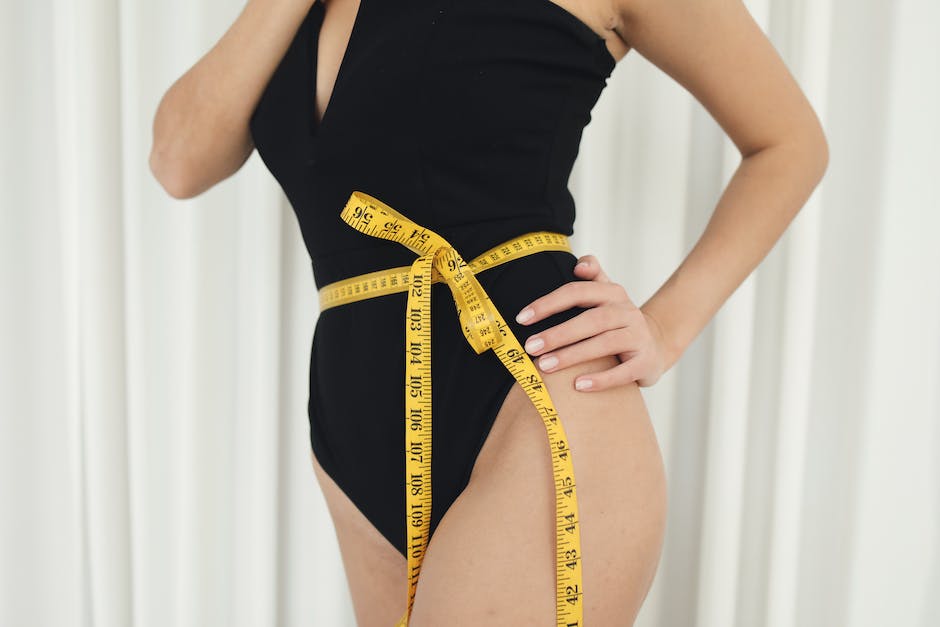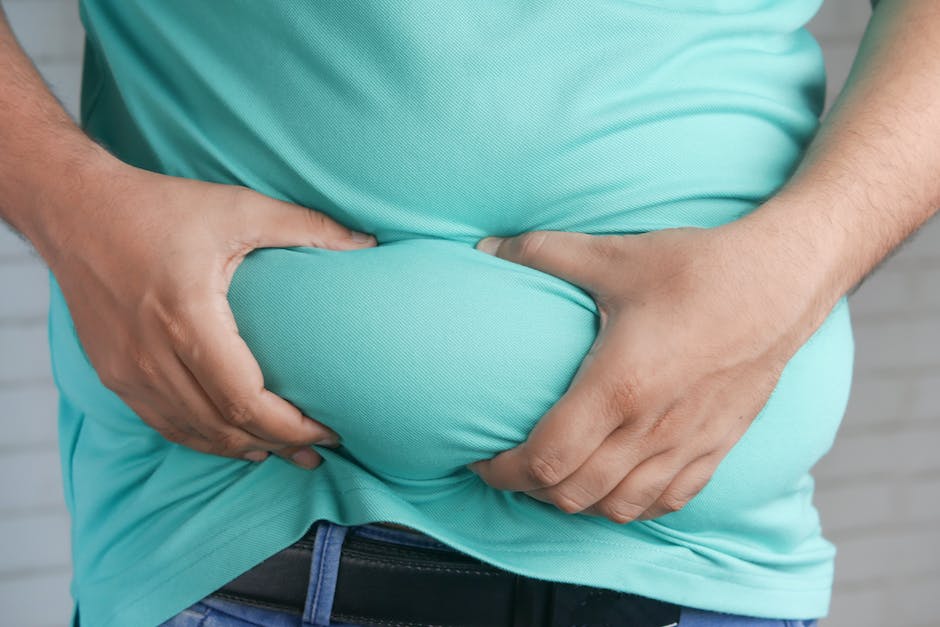Body composition is a critical aspect of overall health and fitness, and it’s more complex than simply tracking your weight. Two important components often overlooked are girth measurements and body fat percentage. Girth measurements, the circumference of different body parts, equip us with key insights into our body composition. Combined with understanding body fat percentage, we can obtain a thorough picture of our health state. Whether you’re a fitness enthusiast, an individual concerned about their health, or just curious about these concepts, this discussion aims to demystify girth measurements and body fat percentage, shedding light on their importance, correlation, and practical applications.
Understanding the Basics of Girth Measurements
Understanding Girth Measurements
Girth measurement, in the realm of fitness and health, refers to the measurement of the circumference of different parts of the body. It’s a method that’s used primarily to track changes in body size over a certain period. It is widely incorporated in fitness assessments, helping individuals, health professionals, and trainers to understand better an individual’s body composition.
The importance of girth measurements lies in its role in assessing weight loss or gain, muscle mass increase, and fat distribution. In a weight loss plan, one may not see a significant change on the scale due to muscle gain replacing fat loss, but a decrease in girth measurement would confirm that the plan is efficacious. On the other hand, an increase in a body site’s girth may indicate muscle development in that area. Out of range measurements could also be indicative of health risks. For instance, a waist circumference beyond a certain number is linked with an increased risk of metabolic diseases like diabetes and heart disease.
The process of girth measurement often involves using a flexible and non-stretchable measuring tape. For accuracy, measurements are taken at specific sites while the subject is in an upright, relaxed position and at a particular phase of the respiratory cycle.
Key Body Parts for Girth Measurement
There are various body parts that can be measured in a typical girth measurement. These include the biacromial (shoulder width), chest (around the nipples), waist (smallest part), hip (widest part), thigh (maximum), and calf (maximum).
Standard values for these measurements vary between men and women due to natural differences in body composition and distribution of muscle and fat.
Girth Measurement and Body Fat Percentage
Girth measurements can offer insights into an individual’s approximate body fat percentage. Various equations use the measurements of the waist, hip, thigh, and/or wrist (for women) to estimate body fat percentage, but it’s important to note that these equations may vary in accuracy and may differ based on race, age, and fitness level.
In general, a smaller waist girth indicates a lower body fat percentage and vice versa. Men with a waist circumference of greater than 40 inches and women with a waist circumference of more than 35 inches are generally classified as having an excessive amount of body fat, putting them at a higher risk for obesity-related health complications.
Getting Familiar with Standard Measures
Standard measurements for body circumferences and body fat percentage differ based on factors like gender, race, and age. For instance, the World Health Organization points out that on an average, women have a waist circumference close to 32 inches while for men it’s around 37 inches. It should, however, be pointed out that these are averages and individual figures can greatly differ.
It’s crucial to bear in mind that measurements of body circumferences and body fat percentage lie among a myriad of tools used to gauge a person’s overall health and fitness. You should not rely solely on these numbers, but rather complement them with other measurements such as body mass index (BMI), physical activity intensity, and overall health status in order to paint a more complete and accurate picture of a person’s health.

How Girth Measurements Relate to Body Fat Percentage
Delving Deeper into Body Circumference and Body Fat Percentage
Body circumferences, also referred to as girth measurements, are taken around different parts of the body. These usually include but are not limited to the neck, waist, hips, and thighs. A flexible, non-stretchable tape measure is generally used for these measurements. Most commonly used within health and fitness industries, these measurements assist in monitoring changes in body composition, making it easier to track progress over time.
Correlation between Girth Measurements and Body Fat Percentage
Body circumference measurements can showcase the distribution and accumulation of fat in different areas of the body. Regions with larger measurements typically indicate a higher accumulation of body fat. Researchers and fitness professionals often use girth measurements to predict body fat percentage due to their relationship.
For instance, waist circumference is one girth measurement that is commonly used to estimate body fat. Large waist measurements may signify greater amounts of visceral fat, which is directly associated with a higher risk of conditions like heart diseases and type 2 diabetes.
Examples of Girth Measurement and Body Fat Assessment
A well-known example that embodies this relationship is the Body Mass Index (BMI). While BMI doesn’t measure body fat directly, it takes into account the weight and height of an individual to provide an overall score. A high BMI score often correlates with high body fat percentage, especially on an overweight or obese individual.
Another common method is the use of skinfold thickness measurements. This method involves using calipers to measure the thickness of fat under the skin at specific body locations. The sum of skinfold measurements can help estimate the body’s density, from which fat percentage can be calculated.
Limitations and Accuracy
While there’s a relationship between girth measurements and body fat percentage, it’s important to note the potential for inaccuracies. Body fat distribution varies significantly from person to person based on factors such as genetics, age, and sex. Therefore, girth measurements may not always accurately reflect an individual’s body fat percentage.
Moreover, most of these methods are based on estimations and assumptions, introducing potential errors. For instance, BMI fails to differentiate between mass due to muscle and mass due to fat. And, it may overestimate body fat in athletes and underestimate it in older individuals.
Why You Should Seek Professional Help for Body Composition Analysis
Despite the multiple methods and tools available for body composition analysis, it’s best to seek professional help for accurate results. Trained professionals in the fitness and healthcare sectors use a blend of techniques to increase the precision of the outcomes. Along with the body fat percentage, these professionals take into account various health markers. This comprehensive approach guarantees that your health assessment is not limited to just one aspect of your well-being.

Accurately Assessing Body Fat Percentage
Understanding Skinfold Measurements and Body Fat Percentage
One of the frequently employed techniques for determining body fat percentage is Skinfold measurements. This technique involves using calipers to measure the thickness of your skinfold at multiple body sites such as bicep, tricep, subscapular region, and suprailiac region. These measurements are then evaluated against a reference database to approximately assess your total body fat percentage. But do note that the reliability of skinfold measurements largely depends on the expertise of the person performing the measurements. Additionally, it may not provide an accurate representation of body fat distribution across different individuals or between genders.
Bioelectrical Impedance and Body Fat Percentage
Bioelectrical impedance is another method used to estimate body fat percentage. This method involves running a low electrical current through the body and measuring the resistance or impedance. Fat, water, and muscle all conduct electricity differently – fat has a higher resistance due to its lower water content. Therefore, the greater the resistance, the more body fat. However, bioelectrical impedance is affected by factors such as hydration and food intake. Therefore, in order to get accurate results, it’s recommended to follow a number of guidelines: for example, avoid eating, drinking, or exercising for a certain period before the measurement.
DEXA Scans and Body Fat Percentage
Dual-Energy X-ray Absorptiometry (DEXA) scans are considered one of the most accurate methods for estimating body fat percentage, though they require specialized equipment and are more expensive. DEXA scans work by differentiating between bone, fat, and lean tissue mass. They provide a detailed report including total body fat percentage and how fat is distributed throughout the body. However, radiation exposure, albeit minimal, is a consideration for DEXA scans.
Girth Measurements and Body Fat Percentage
As a simple method to estimate body fat percentage, girth measurements involve measuring the circumference of specific body parts with a flexible measuring tape. Common sites for measuring girth include the waist, hips, and chest for men; and the waist, hips, and forearm for women. These measurements are then put in a formula with other factors like age, gender, and weight to estimate body fat. Girth measurement can be useful in tracking changes in body composition over time, but like skinfold method, it may not accurately capture fat distribution throughout the entire body.
Understanding Body Fat Percentage Measurement
The methodology involved in calculating your body fat percentage can potentially vary in its degree of precision. It is crucial to keep in mind that all these techniques are merely estimations and their results can vastly differ depending on a multitude of aspects. For instance, the proficiency of the individual conducting the measurement, hydration status, and recent food consumption can all impact the accuracy of the result. Additionally, the distribution of fat varies across different individuals and genders, impacting the precision of such measurements. The most suitable method of assessment, whether it be via caliper use or a DEXA scan, hinges largely upon your individual health goals as well as availability of resources.

Applications and implications of Girth Measurements and Body Fat Percentage
The Associated Health Implications of High Body Fat Percentage
An elevated body fat percentage can often be a harbinger of several health complications. These complications span from seemingly less severe issues such as increased fatigue and breathlessness, to more ominous health threats like hypertension, heart diseases, type 2 diabetes, sleep apnea, and certain types of cancers. Mental health issues have also been found to have an association with higher body fat percentages. The risk of certain metabolic diseases is particularly increased by the presence of excess body fat in the abdominal region, also referred to as visceral fat, due to its links with insulin resistance and bodily inflammation.
Girth Measurement: A Tool in Fitness and Weight Loss Programs
Girth measurements provide an easy method for tracking physical improvements in fitness and weight loss programs. By recording measurements of waist, hip, thigh, or other body parts, individuals can monitor their progress over time. This measurement can be more informative than just tracking weight on a scale, as it can reflect body composition changes. For instance, when combined with other data such as body fat percentage, healthcare and fitness professionals can assess individuals’ progress in losing fat and gaining muscle.
Body Fat Percentage in Professional Sports
A major implication of body fat percentage exists in the world of professional sports. Different sports and positions within those sports may have optimal body fat percentage ranges. For example, endurance athletes such as marathon runners and cyclists often aim for lower body fat percentages to maximize their performance, while certain positions in sports like American football may value higher body fat percentages for increased size and strength. Recognizing this, coaches and nutritionists work with athletes on personalized training and diet plans to help them achieve their ideal body composition.
Body Fat Percentage and Girth Measurement: Not Just About Appearance
Beyond physical appearance, understanding one’s body fat percentage and girth measurements has real implications for one’s overall health status and wellbeing. These measurements can be early indicators of potential health risks, allowing for preventative measures. They also provide a reference point for setting realistic and healthy fitness goals.
Inaccuracies Associated with Girth Measurements and Body Fat Percentage
Measurement methods for both girth and body fat percentage may not be 100% accurate and can be influenced by various factors such as hydration status, recent food intake, and even the individual conducting the measurements. Despite these potential inaccuracies, these measurements are useful for tracking trends over time and gauging overall health and fitness progress.
Advancements in Body Composition Assessment Technology
With the advent of cutting-edge technology, emerging methods of analyzing body composition, such as girth measurement and determining body fat percentage, are continuously developed. Devices like smart scales, hand-held gadgets, and even smartphone applications have become instrumental in obtaining precise and often more refined data collection and analysis. These breakthrough technologies pave the way for individualized health and fitness objectives and programs.

Tips to Maintain a Healthy Body Fat Percentage
Deciphering the Importance of Girth Measurements and Body Fat Percentage
Two crucial metrics that provide crucial insights into your physical well-being are girth measurements and body fat percentage. The former involves measuring various body parts including the waist, hips, and thighs, to understand the fat and muscle distribution in your body. Body fat percentage is a mathematical estimate that quantifies the total fat in your body as a function of your weight. Healthy body fat percentages differ based on age and gender, but they generally oscillate between 20%-36% for females and 8%-24% for males.
The Role of Diet in Body Fat and Girth Measurement Maintenance
The food you consume significantly influences your body fat percentage and girth measurements. To maintain a healthy body fat percentage, focus on consuming a balanced diet rich in lean proteins, whole grains, fruits, vegetables, and healthy fats. Strive to limit the intake of processed foods, sugars, and trans fats, as these can lead to an increase in body fat. Hydration also plays a crucial role not only in maintaining a healthy weight but in overall body functioning.
Exercise: An essential to achieving a healthy body size
Exercise is another significant factor when it comes to managing your body fat percentage and girth measurements. A combination of both cardio and resistance training is highly beneficial. Cardio exercises, like jogging, cycling, or swimming, can help burn fat, while resistance training helps build lean muscle, which in turn assists in burning more calories, even at rest. Remember, muscle mass weighs more than fat, so as you build muscle and lose fat, your weight may stabilize or even slightly increase, but your girth measurements and body fat percentage should improve.
Importance of Sleep in Weight and Fat Management
Sleep is an often-overlooked aspect of maintaining a healthy body fat percentage. Lack of adequate sleep has been linked to weight gain and increased fat storage in the body. This is because sleep deprivation can disrupt hormones that regulate hunger and appetite. Thus, ensuring that you get a recommended 7-9 hours of sleep nightly can positively impact your overall body fat percentage.
Stress Management: The Unseen Factor
Chronic stress management is also a significant part of maintaining a healthy body. High stress levels disrupt the hormonal balance in the body, leading to weight gain or an increase in body fat percentage. Some stress management techniques include meditation, yoga, deep-breathing exercises, or any relaxation techniques that help reduce stress levels.
Regular Assessment and Adjustments
To maintain healthy girth measurements and body fat percentage, regular assessment and adjustments to your lifestyle habits are needed. Keeping track of your measurements and making necessary changes to your diet, exercise, sleep, or stress levels will help you maintain a healthy body fat percentage and overall wellbeing. Consulting with a healthcare or fitness professional for regular assessments can also provide guidance and help troubleshoot any roadblocks.

Ultimately, understanding your body’s girth measurements and fat percentage plays a key role in crafting a lifestyle that promotes health and longevity. It is worth noting that these measurements are not standalone markers of health. Instead, they should be considered as part of a holistic approach to wellbeing, which includes balanced nutrition, regular physical activity, adequate sleep, and stress management. By understanding our bodies better, we can make informed decisions about our behaviors and lifestyle changes. Here’s to a healthier, more informed you!
